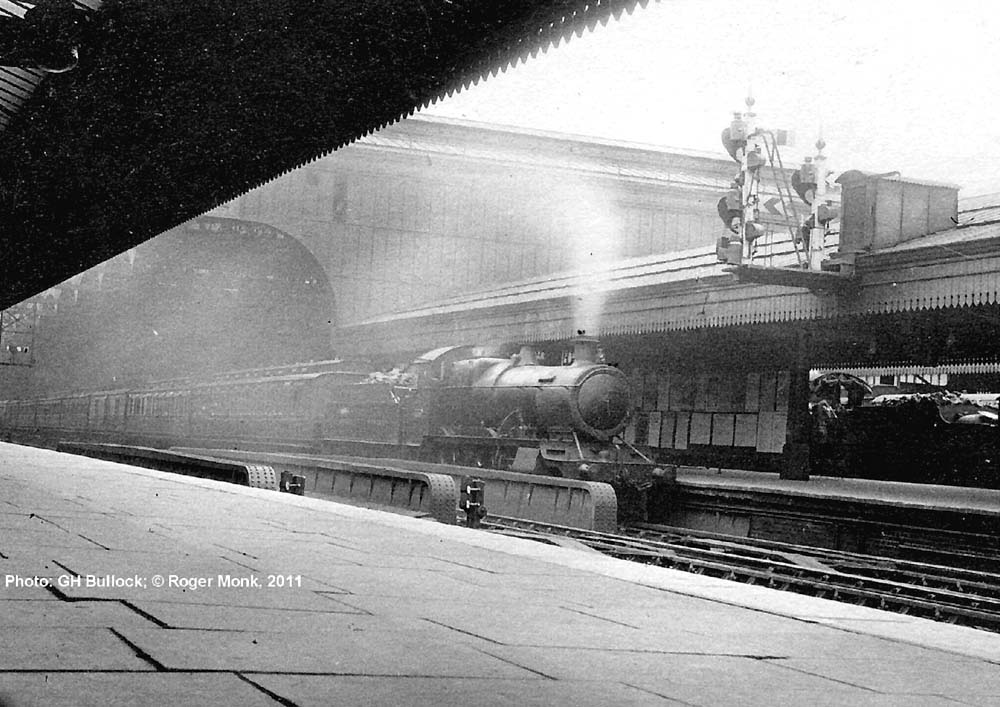 |
|
GWR Route: Banbury to Wolverhampton
GWR Route: North Warwickshire Line
Birmingham Snow Hill Station: gwrbsh1787
 |
An unidentified Great Western Railway 2-6-0 43xx class
locomotive with class B headcode (denoting an ordinary passenger train) waiting
at platform No 5 in the early 1920s. The 43xx class proved to very versatile
locomotives and they were equally at home hauling freight traffic or standing
in on express passenger duties. Eventually 342 locomotives of this class were
built, but there were variations which can be used to aid identification. For
example, the locomotive in this photograph has a rain strip on the cab roof, a
short lived addition introduced on locomotives after No 5340. It has the early
type large radius motion bar cross frame plate, which was subsequently modified
with a flange on locomotives after No 5384. The right hand side elongated
centre wheel splasher disappeared at about the same time. The locomotive also
has no superheater damper on the smokebox, a feature only found on locomotives
constructed prior to No 5350, but removed from all the locomotives by 1925.
These variations point to this locomotive being from either lot 208 or 209 (Nos
5350 to 5383). All these thirty three locomotives were built at Swindon Works
between 9th July 1918 and 10th July 1920.
From the start the 43xx locomotives had all the
recognisable Great Western Railway tender locomotive features; a coned domeless
boiler (with belpaire firebox, brass safety valve and drumhead smoke box),
superheating, top-feed apparatus and curved drop frame ends. The boiler was a
standard No 4 operating at a pressure of 200 lbs, which in 1938 was increased
to 225 lbs. At 200 lbs this gave a tractive effort at 85% of 25,670 lbs, which
placed the locomotive in power group D. The maximum axle weight was 17 tons, 13
cwt, which restricted the locomotive to main lines and some branch lines (Route
Colour – Blue). The locomotives suffered from excessive flange wear when
working lines with sharp curves and the majority of the locomotives in lots 208
and 209 were modified in 1928 by inserting an 11.5 inch thick casting behind
the buffer beam. The modified locomotives we renumbered into the 83xx series
but the increased weight resulted in these locomotives being restricted to Red
routes. To increase their operational versatility these casting were removed
from the locomotives in 1944 and their original number and route colour was
restored. Most of the lot 208 and 209 locomotives survived into British
Railways ownership and typically had completed over 1,200,000 miles when
withdrawn.
Robert Ferris
 back back

|
